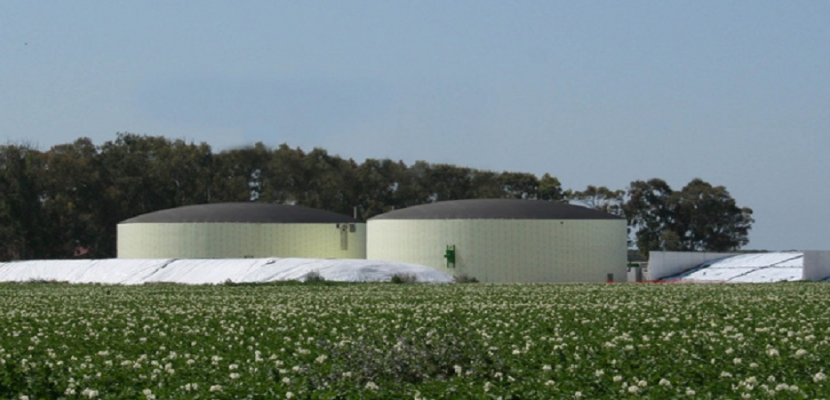Image

Maccarese Agricultural Company: from animal farming to energy production.
Published on 24 July 2020

Italy
This is the good practice's implementation level. It can be national, regional or local.
About this good practice
20 km North of Rome, the Maccarese farm, founded in 1930 and privatised in 1998, is the largest in Italy with its 3240 hectares of flat land. The farm's prevalent productive address is fodder-zootechnic with production of cereals and fruit. Inside the farm, in an area of 16 hectares, there is the largest dairy cow breeding in Italy: 3,600 selected cows of the Friesian breed, with 1250 lactating cows, for the daily production of 48,000 litres of milk. Adhering to the plan promoted by the Government in favour of RE, the farm realized two plants for the production of electricity from biogas: 1) Built in 2010; with a power of 625 Kw, it is able to produce 4.500.000 Kw net/year. It uses cattle slurry (mc 130/day) and silage (22 tons/day). Articulated on two circular digesters with a diameter of 24 m. by 9 m. of height, it is equipped with a preloading tank, a torch, a feeding system for the loading of silage and uses a Jenbacker j312 engine;. 2) Built in 2012, it has a power of 999 Kw.It is fed exclusively with cereal silage, and is able to produce 8,750,000 Kw net/year. Articulated on three digesters, it is equipped with an overloading tank, a torch, a feeding system for loading silage and uses a Jenbacker j416 engine.
The liquid digestate,, deprived of any odor, is spread on the fields as a soil improver, while the solid part is used as litter for adult cattle and then as a soil improver.
The main beneficiary is the farm itself but also the whole community.
The liquid digestate,, deprived of any odor, is spread on the fields as a soil improver, while the solid part is used as litter for adult cattle and then as a soil improver.
The main beneficiary is the farm itself but also the whole community.
Expert opinion
Anaerobic digestion of organic waste for generation of biogas is a well proven solution, as is the generation of electricity from said biogas. What is interesting about this practice is the high degree of circularity – using own farm waste to produce biogas, and using the remaining digestate also as a soil amendment – as well as that the high private investment involved, with only a feed-in-tariff to stimulate investment. More information about the successful roll-out of biogas plants can be found in this PLP webinar: https://www.interregeurope.eu/policylearning/event/3423/webinar-on-biogas-from-organic-waste/
Works at
Interreg Europe Policy Learning Platform
Resources needed
These plants were built with the company's own funds (€ 6 mil) and benefit from national incentive policies pursuant to Article 2 par 145 of Law 244/2007. This law allows companies to benefit from a fixed all-inclusive tariff for the electricity produced with RE and fed into the operator's network .
Evidence of success
In 2019, the first plant produced 4,732,667 gross kw per year with an engine efficiency of 97.80 % or 8573 hours of operation per year with a 6 % self-consumption of energy for the operation of the plant.
In 2019 the second plant produced 8,203,909 gross kw per year with an engine efficiency of 99.18% equal to 8688 hours of operation per year with a percentage of 7% self-consumption of energy for the operation of the plant itself.
In 2019 the second plant produced 8,203,909 gross kw per year with an engine efficiency of 99.18% equal to 8688 hours of operation per year with a percentage of 7% self-consumption of energy for the operation of the plant itself.
Potential for learning or transfer
What seems to be the most significant message of this BP is that of the all-round conception of environmental protection that touches on multiple aspects of the farm:
- Biogas plants, besides being a model of circular economy, bring to the environment important advantages such as the reduction of the diffusion in the atmosphere of methane naturally produced by cattle droppings and help to support the development of sustainable agriculture as using digestate for the improvement of soil fertility reduces the use of chemical products.
- The attention to the environment on the part of the company is then confirmed by the attention to biodiversity in the conservation of 200 hectares of Mediterranean maquis constituting a naturalistic oasis.
- Finally, the company preserves important historical buildings (Castle of San Giorgio and the Spring Tower of 16th century) and in its spaces there is also the headquarters of Biodiversity International, the FAO research institute.
- Biogas plants, besides being a model of circular economy, bring to the environment important advantages such as the reduction of the diffusion in the atmosphere of methane naturally produced by cattle droppings and help to support the development of sustainable agriculture as using digestate for the improvement of soil fertility reduces the use of chemical products.
- The attention to the environment on the part of the company is then confirmed by the attention to biodiversity in the conservation of 200 hectares of Mediterranean maquis constituting a naturalistic oasis.
- Finally, the company preserves important historical buildings (Castle of San Giorgio and the Spring Tower of 16th century) and in its spaces there is also the headquarters of Biodiversity International, the FAO research institute.
Further information
Website
Good practice owner
You can contact the good practice owner below for more detailed information.
Organisation
Lazio Region

Italy
Lazio
Contact
Manager
